I am using MySQL, PHP, and Fusion Charts to create a line graph to track the amount of money invoiced for each month in 2016. The two columns in my table that I am using for this graph are InvoiceAmount (Decimal type) and InvoiceDate (DateTime type).
My goal is to have the X-axis of my graph be the dates by month (Jan, Feb, Mar, etc.) from InvoiceDate and the Y-axis be the dollar amount from InvoiceAmount. I got started by converting my MySQL data into a JSON format for it to be readable by Fusion Charts:
//the SQL query to be executed
$query = "SELECT DATE_FORMAT(InvoiceDate, '%M') AS InvoiceMonth, InvoiceAmount FROM Estimates WHERE InvoiceDate IS NOT NULL AND YEAR(InvoiceDate) = 2016 AND InvoiceAmount IS NOT NULL AND InvoiceAmount > 0";
//storing the result of the executed query
$result = $conn->query($query);
//initialize the array to store the processed data
$jsonArray = array();
//check if there is any data returned by the SQL Query
if ($result->num_rows > 0) {
//Converting the results into an associative array
while($row = $result->fetch_assoc()) {
$jsonArrayItem = array();
$jsonArrayItem['label'] = $row['InvoiceMonth'];
$jsonArrayItem['value'] = $row['InvoiceAmount'];
//append the above created object into the main array.
array_push($jsonArray, $jsonArrayItem);
}
}
//Closing the connection to DB
$conn->close();
//set the response content type as JSON
header('Content-type: application/json');
//output the return value of json encode using the echo function.
echo json_encode($jsonArray, JSON_PRETTY_PRINT);
This outputs a JSON like this:
[
{
"label": "January",
"value": "11361.00"
},
{
"label": "December",
"value": "1164.40"
},
{
"label": "February",
"value": "166.80"
},
{
"label": "July",
"value": "5088.00"
},
{
"label": "January",
"value": "214.50"
},
{
"label": "June",
"value": "620.40"
},
{
"label": "July",
"value": "5250.00"
},
{
"label": "March",
"value": "3425.00"
},
{
"label": "January",
"value": "3790.00"
},
{
"label": "February",
"value": "1909.80"
},
{
"label": "January",
"value": "1780.00"
},
{
"label": "January",
"value": "3060.00"
},
{
"label": "January",
"value": "2680.00"
},
{
"label": "February",
"value": "604.80"
}
]
etc.
As you can see, there are several values that have the same month attached to them. Currently, the line graph is treating each of these label/value pairs as one distinct instance, when what I need is for all of the values from a specific month to be added together to make overall monthly value for Jan, Feb, Mar, etc.
Is there a function I can use in PHP or MySQL that will check which month is attached to the value, and then add all of the values from the same month together? Please let me know the best way to tackle this problem. Thank you for your help.
